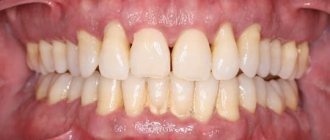- Classification, types of laryngeal tumors
- Causes and risk factors for laryngeal cancer
- Symptoms of laryngeal cancer
- Methods for diagnosing laryngeal cancer
- Modern methods of treating laryngeal cancer
- Surgery
- Radiation therapy
- Chemotherapy for laryngeal cancer
- Targeted therapy
- Nutrition for laryngeal cancer
- Do traditional methods help in the fight against laryngeal cancer?
- Survival prognosis
- Methods of prevention and early diagnosis
- How much does laryngeal cancer treatment cost?
The phrase “throat cancer” usually means malignant tumors of the larynx, an organ that is involved in air conduction and voice formation. These tumors belong to the larger group of head and neck cancers.
The upper edge of the larynx begins near the root of the tongue, the lower goes into the trachea. In shape it can be compared to a funnel, with its narrow part pointing downwards. Its walls consist of cartilage, muscles and ligaments; the inside surface is lined with mucous membrane. There are three sections in the larynx:
- The upper section is located above the vocal cords.
- The middle section includes the vocal cords.
- The lower section is located under the vocal cords.
Some numbers and facts regarding laryngeal cancer:
- The two main causes of the disease are smoking and drinking alcohol. Tobacco smoke and ethyl alcohol are carcinogenic; they cause mutations in the cells of the mucous membrane and their malignant degeneration.
- In recent years, the prevalence of the disease has decreased by 2–3% annually. There is a direct correlation with a decrease in smoking prevalence.
- About 60% of malignant tumors of the larynx develop in the vocal cords. Another 35% occur in the upper section, the remaining cases occur in the lower section, or when the tumor involves more than one section.
Write to an oncologist
Classification, types of laryngeal tumors
Almost all malignant tumors of the larynx are squamous cell carcinoma, which develops from cells of the mucous membrane. This is often preceded by precancerous changes. Often, dysplasia does not transform into cancer and disappears on its own, especially if the damaging factors are eliminated - for example, a person quits smoking.
In some cases, precancerous changes transform into “cancer in situ.” It does not grow beyond the mucous membrane and can be successfully treated if detected early. Cancer in situ is a stage zero tumor. If left untreated, it will progress further. The stage gradation varies depending on which part of the organ the malignant tumor is located in. The table summarizes the classification by stages:
Stage I
Above the vocal cords: the tumor is located within the upper part of the larynx, does not spread to other parts and does not interfere with the functioning of the vocal cords. Regional lymph nodes are not affected, there are no distant metastases.
In the area of the vocal cords: the tumor has grown deeper than in situ cancer, but does not impair the mobility of the vocal cords. There are no metastases, no lymph nodes are affected.
Under the vocal cords: the tumor is located within the lower level of the larynx, does not spread to the lymph nodes and does not give distant metastases.
Stage II
Above the vocal cords: The tumor has spread to more than one part of the larynx but is still not affecting the movement of the vocal cords.
In the area of the vocal cords: the tumor has spread to more than one part of the larynx and/or the mobility of the vocal cords is impaired.
Under the vocal cords: The tumor spreads to more than one part of the larynx and may impair the mobility of the vocal cords.
Stage III
Above the vocal cords: the tumor impairs the mobility of the vocal cords and/or grows into the surrounding tissue.
In the area of the vocal cords, under the vocal cords: the tumor impairs the mobility of the vocal cords, or spreads into the surrounding tissues, or there is one lesion measuring less than 3 cm in the regional lymph nodes.
Stage IV
Above, below and in the area of the vocal cords : the tumor spreads more strongly to the surrounding tissues, regional lymph nodes, and there are distant metastases.
adenocarcinomas occur in the larynx . They are found very rarely, but over the last 20 years, according to UK statistics, their prevalence has been increasing.
Stages
The appearance of symptoms of laryngeal cancer is often preceded by a precancerous condition - dysplasia of the mucous membrane, which develops with constant irritation from cigarette smoke, strong alcohol or pollutants. If the irritating factor is eliminated, this condition often disappears on its own, otherwise a transition to the so-called zero stage of cancer is possible - in situ, or “in situ”, when pathological cells remain within the epithelial tissue. Subsequently, rapid growth and spread of the tumor occurs.
Otolaryngologists and oncologists distinguish four main stages of the disease.
- The pathological formation remains within the original part of the larynx, spreading into the mucous membrane and submucosal layer. Symptoms are absent or subtle.
- The tumor grows into all layers of throat tissue, but remains within the original region. Sore throat and voice changes appear.
- The neoplasm penetrates into the tissues adjacent to the throat and regional lymph nodes. The sore throat intensifies, cough, ulcers and other characteristic symptoms appear.
- The tumor grows so much that it becomes clearly visible on the neck. It grows into all surrounding tissues and metastasizes to nearby and distant organs. The patient's condition deteriorates sharply, and he is tormented by constant pain.
Causes and risk factors for laryngeal cancer
The main two risk factors for laryngeal cancer are smoking and drinking alcohol. Moreover, the risks are directly proportional to the strength of bad habits:
- People who drink a lot of alcohol have an approximately threefold increased risk.
- A person who smoked 25 cigarettes daily for 40 years or more has a 40-fold increased risk.
- If a person smokes and drinks alcohol at the same time, his likelihood of getting sick is even higher.
Other risk factors for laryngeal cancer:
- Age . The disease is very rare among people under 40 years of age.
- Human papillomavirus infection . Studies have shown that human papillomavirus type 16 plays a role in the development of malignant tumors of the larynx. But this issue requires further study.
- Nutritional Features . A diet that is low in vitamins and minerals and high in processed red meat.
- Family History . The risk is increased in people who have a family history of diagnosed head and neck cancer.
- Decreased immunity . HIV/AIDS increases the risk by approximately 3 times, drugs for suppressing immunity after organ transplantation - by 2 times.
- Exposure to certain harmful substances: formaldehyde, wood and coal dust, soot, paints, smoke from coal combustion.
- Gastroesophageal reflux. Acidic stomach juice can damage the mucous membrane of the esophagus and larynx, causing changes in them that contribute to the development of cancer.
- Genetic defects. Laryngeal cancer sometimes develops in children who do not have any risk factors. Presumably this is due to some unknown defective gene.
You need to understand that “cause” and “risk factor” are not the same thing. The presence of risk factors does not guarantee that a person will definitely be diagnosed with cancer. Each of them increases the probability only to a certain extent.
Book a consultation 24 hours a day
+7+7+78
Causes of the disease
Most often, laryngeal cancer affects men aged 40 to 70 years. However, over the past decade there has been an increase in the incidence of this disease in women. But, as a rule, it occurs in them in a less aggressive form and is more treatable.
Oncologists suggest that the appearance of the disease may be due to genetic factors, but so far no mutations have been discovered that could contribute to the formation of laryngeal cancer.
Other possible causes of throat cancer:
- tobacco addiction;
- alcohol abuse (especially alcoholic beverages with high ethanol content);
- exposure to harmful chemicals on the respiratory system;
- contact with asbestos (previously it was used as roofing felt);
- exposure to heavy metals (chromium, nickel and uranium);
- vitamin A deficiency;
- mechanical injuries of the larynx;
- gastroesophageal reflux disease;
- improper use of the voice (for example, in the professions of teacher and singer);
- infection caused by the human papillomavirus (HPV).
To reduce the likelihood of throat cancer, it is enough to give up tobacco and alcohol, and take precautions if you work in a workplace where you are expected to come into contact with chemicals.
Symptoms of laryngeal cancer
Symptoms and manifestations of a laryngeal tumor may vary, depending on which part of the organ is affected. If the formation is localized in the supraglottic region, then in the early stages the patient will complain of:
- Discomfort when swallowing.
- Foreign body sensation.
As the tumor grows, these symptoms include:
- Increasing pain in the throat, which can radiate to the parotid area.
- Significant reduction in body weight. The patient limits himself to food due to the presence of the above symptoms of laryngeal cancer, as a result of which he rapidly loses weight.
- As a result of tumor infiltration, rigidity of the epiglottis may develop. In this condition, the lumen of the larynx does not close completely during swallowing, which leads to dysphagia and severe coughing due to food entering the trachea.
Tumors of the ligamentous region are the most prognostically favorable, since their manifestations, even in the early stages, cause the patient severe discomfort and, as a rule, force him to consult a doctor.
Symptoms of vocal cord cancer:
- Hoarseness.
- Difficulty breathing (typical of late stages, develops as the tumor enlarges).
When the tumor is localized in the subglottic region, the symptoms of throat cancer are similar to damage to the vocal cords: hoarseness is observed, and sometimes breathing may be difficult when inhaling. However, this type manifests itself clinically at later stages.
Tumors of the subglottic region are rare: only 2% of cases. In 23% of patients, simultaneous damage to two or all three parts of the larynx is detected.
Rehabilitation
Postoperative rehabilitation of patients is a complex and lengthy process, which includes a gentle diet consisting mainly of liquid and pureed dishes without strong flavoring additives. Initially, nutrition is administered through a tube, then the person is able to eat in the usual way.
To strengthen the muscles of the neck and throat, special exercises are prescribed. They allow you to develop diction and at the same time eliminate complications such as bleeding from the throat. In some cases, it is necessary to carry out additional intervention to restore the vocal cords or implant an artificial larynx so that the person is able to speak.
Psychological support is of great importance, since after the operation a person actually learns to use the speech apparatus again, and his voice changes significantly. The modern level of medicine allows even those whose larynx was completely removed due to a tumor to return to normal life.
Methods for diagnosing laryngeal cancer
During the initial appointment, the doctor asks the patient about symptoms, lifestyle, bad habits, examines and feels the neck. Indirect laryngoscopy can be performed right in the office : the doctor asks the patient to open his mouth and examines the larynx using a small mirror inserted through the mouth.
If an oncological disease is suspected, the first step is direct laryngoscopy (examination of the larynx using special instruments - a flexible fiberscope or a rigid laryngoscope ), endoscopic examination of the trachea, esophagus, and bronchi. During these studies, a biopsy : having discovered a pathologically changed area of the mucous membrane, a fragment of it is removed and sent to the laboratory for cytological and histological examination.
A biopsy makes it possible to diagnose a malignant tumor with high accuracy. But the examination often does not end there. It is necessary to evaluate how much the tumor has grown into the wall of the larynx and surrounding tissues, whether there is damage to the lymph nodes, or distant metastases. Diagnostic methods such as CT, MRI, PET scanning, bone scintigraphy, radiography of the stomach and esophagus with barium sulfate contrast help with this.
Find out the exact cost of treatment
Diagnostics
If the described symptoms last more than 2 weeks, immediate consultation with a doctor is indicated. The specialist examines complaints, conducts an external examination and prescribes diagnostic procedures:
- X-ray of the larynx, esophagus;
- Ultrasound of the neck area;
- MRI of the larynx is the most accurate study;
- blood test (immunological);
- laryngoscopy – examination using an endoscope;
- biopsy (sampling of biological material) of the tumor with histological analysis.
Surgery
Surgery is the main treatment for laryngeal cancer. In the early stages it can be used independently, in later stages it can be used in combination with chemotherapy and radiation therapy.
In the early stages, you can resort to endoscopic intervention (it resembles laryngoscopy), cordectomy (removal of the vocal cords). Superficial cancer can be removed using a laser, but this intervention has the disadvantage that it does not leave a piece of tissue for biopsy.
Also, stages I-II of throat cancer are treated with organ-preserving resection of the larynx, hemilaryngectomy. In order to prevent the development of laryngeal stenosis in the postoperative period, a special expanding endoprosthesis is used, which is removed after 3-4 weeks.
In more advanced cases, they resort to laryngectomy - complete or partial removal of the larynx. It comes in different types:
- Partial laryngectomy - removal of the part of the larynx where the tumor is located.
- Upper laryngectomy - removal of the upper part of the larynx.
- Hemilaryngectomy - removal of half of the larynx.
- Total laryngectomy - removal of the entire larynx. In this case, the upper end of the trachea is sutured to the skin and an opening is formed - this operation is called tracheostomy . Through the resulting hole - a tracheostomy - the patient can breathe.
Patients often ask: is throat cancer with metastases curable? In case of regional metastasis, during laryngectomy, surgeons excise the cervical tissue and lymph nodes. In addition, if necessary, resection of other anatomical formations and organs of the neck is carried out if they are involved in the tumor process (sternocleidomastoid muscle, internal jugular vein, pharynx, thyroid gland).
According to indications, reconstructive plastic surgery is performed after the main surgical intervention. If the tumor is inoperable but blocks the airway, a palliative tracheostomy is performed.
Morbidity statistics
Laryngeal cancer accounts for 2.6% of all cancers. It is in first place in terms of incidence among head and neck tumors. In 95% of cases, malignant lesions of the larynx are squamous cell carcinoma, 2% each are glandular cancer and basal cell carcinoma, and 1% are rare types of cancer.
Men are more susceptible to the disease - they are diagnosed 9-10 times more often than women. 80-95% of patients are men from 40 to 60 years old. Most of them are heavy smokers.
The survival prognosis directly depends on the stage at which the cancer is detected and its location. If the tumor is detected at stage I, the five-year survival rate is 85%, at stage II – 70%, at stage III – 60%, at stage IV it decreases to 20%.
When chemoradiation therapy is started in the early stages, stable remission is achieved in 85-95% of cases, in late stages - in 30-40%.
Neoplasms of the upper part of the larynx give metastases to regional lymph nodes in 35-45% of cases, of the lower part - in 15-20%. In the area of the vocal cords, the lymphatic network is less developed, so the tumor in this area metastasizes rarely and late.
Radiation therapy
For laryngeal cancer, it is often necessary to resort to radiation therapy, and radiation can be prescribed for different purposes:
- As an adjuvant treatment after surgery to destroy remaining cancer cells that may cause future recurrence.
- For the treatment of recurrent cancer.
- As an independent treatment for inoperable tumors.
- To combat pain, bleeding, difficulty swallowing and advanced bone metastases.
- On your own in the early stages of cancer. Some small tumors can be destroyed with radiation without surgery.
Throat cancer is treated using conventional radiation therapy or in combination with hyperbaric oxygen therapy. Using this technique, an increase in the damaging effect on tumor cells is achieved and the harm of this method on surrounding healthy tissue is reduced.
Symptoms
The initial manifestations of the disease resemble a common cold:
- sore throat that makes it difficult to speak or swallow food;
- feeling of the presence of a foreign body in the throat;
- swelling of the tonsils;
- change in voice - hoarseness or nasality;
- frequent headaches;
- general weakness, decreased performance;
- slight increase in body temperature;
- enlargement of the submandibular lymph nodes.
However, unlike a cold, the first symptoms of throat cancer do not go away within a week. The listed signs intensify, and over time they are added:
- light spots on the mucous membrane;
- small bleeding ulcers;
- chronic cough;
- ear pain without signs of otitis media;
- weight loss for no apparent reason;
- the appearance of a tumor in the neck;
- difficulties in pronouncing words due to decreased mobility of the tongue;
- labored breathing;
- nose bleeding
Chemotherapy for laryngeal cancer
For malignant tumors of the larynx, various chemotherapy drugs are used: carboplatin, cisplatin, docetaxel, 5-fluorouracil, epirubicin, paclitaxel. The goals of chemotherapy, like radiation therapy, are different:
- Before surgery ( neoadjuvant chemotherapy ) to shrink the tumor.
- Combined with radiation therapy ( chemoradiotherapy) after surgery to prevent recurrence.
- As part of chemoradiotherapy for inoperable tumors at late stages.
- To combat symptoms of advanced cancer.
Treatment of stage III-IV laryngeal cancer when localized in the middle section always begins with the use of chemotherapy drugs. Tumors that are located in the supra- and subglottic region do not respond well to this type of treatment.
Classification
Tumors in the oropharynx are divided into three types:
| Benign neoplasms | Not dangerous, but cause discomfort. Eliminated surgically | Osteochondroma |
| Leiomyoma | ||
| Eosinophilic granuloma | ||
| Condyloma acuminata | ||
| Fibroma | ||
| Odontogenic tumors | ||
| Verruciform xanthoma | ||
| Granular cell tumor | ||
| Pyogenic granuloma | ||
| Rhabdomyoma | ||
| Neurofibroma | ||
| Schwannoma | ||
| Keratoacanthoma | ||
| Papilloma | ||
| Lipoma | ||
| Precancerous conditions | There is a risk of malignancy, but sometimes dysplasia regresses on its own | Leukoplakia. Whitish or gray dots appear on the mucous membrane. They protrude above the surface or remain flat |
| Erythroplakia. Red spots form that bleed when touched lightly | ||
| Cancerous tumor arising from non-keratinizing epithelial cells | The doctor individually selects a treatment regimen | Carcinoma that grows only from the superficial layer of the epithelium. Diagnosed in 90% of cases, with 60% associated with the detection of HPV strain 16 or 18 |
| Polymorphic low-grade adenocarcinoma | ||
| Adenoid cystic carcinoma | ||
| Mucoepidermal carcinoma | ||
| Lymphoma |
Figure 1. Leukoplakia
Figure 2.1. Erythroplakia
Figure 2.2. Erythroplakia
Targeted therapy
Often, on the surface of tumor cells in laryngeal cancer there is a large amount of the EGFR receptor protein. When activated, it stimulates cell division. In such cases, a targeted drug called cetuximab . It is usually administered intravenously once a week:
- In the early stages, in some cases, cetuximab is used in combination with radiation therapy.
- At later stages, the drug is prescribed in combination with chemotherapy drugs, in particular cisplatin, 5-fluorouracil.
Can throat cancer be cured? If the tumor is detected early, the cure rate is very high: with proper treatment, recovery occurs in 85-95% of cases. The capabilities of modern medicine make it possible to help patients even with advanced stages of cancer. In 5-20% of patients with stage III damage to the middle part of the larynx, with a competent approach from specialists, they can fully recover.
Book a consultation 24 hours a day
+7+7+78
Nutrition for laryngeal cancer
Treatment for laryngeal cancer can lead to some nutritional problems: difficulty swallowing, decreased taste. After a course of radiation therapy, I am bothered by severe pain that interferes with swallowing and eating normally. To combat this symptom, painkillers are prescribed, and feeding may be done through a tube for some time. In the future, products that lead to throat irritation are contraindicated.
After surgery, feeding is done through a nasogastric tube or through a gastrostomy tube, an opening (usually temporary) that connects the stomach to the surface of the skin. Gradually, the patient can begin to eat independently.
A problem that many patients face is a decreased sense of taste. The taste of food seems insufficiently rich, as if it has become bland. Spices, marinades, and sauces help cope with this problem.
Survival prognosis
The prognosis for laryngeal cancer is influenced by various factors, but the stage of the tumor and its location are most important. The table below shows the average 5-year survival rates (the percentage of patients who remain alive 5 years after their cancer diagnosis):
Tumors in the upper larynx:
- Stage I: 59%
- Stage II: 59%
- Stage III: 53%
- Stage IV: 34%
Tumors in the vocal cords:
- Stage I: 90%
- Stage II: 74%
- Stage III: 56%
- Stage IV: 44%
Tumors in the lower part of the larynx:
- Stage I: 53–65%
- Stage II: 39–56%
- Stage III: 36–47%
- Stage IV: 24–32%
Methods of prevention and early diagnosis
The main risk factors for laryngeal cancer can be influenced. Here are three main recommendations:
- Stop smoking and generally use tobacco in any form. Not only cigarettes are dangerous, but also pipes, cigars, hookahs, and chewing tobacco.
- Try to drink as little alcohol as possible, preferably giving it up completely.
- Less red meat and sausages, more vegetables and fruits. The diet must contain all the necessary vitamins and minerals.
Risks can be reduced, but you cannot protect yourself 100%. Therefore, it is important for people at increased risk of cancer to undergo regular screening. However, there are no recommended screening programs for laryngeal cancer. This type of cancer is not very common and often causes symptoms in the early stages, so mass screening is not considered practical.
Prevention
Cancer can be prevented by following a number of recommendations from experts. First of all, it is important to properly care for your oral cavity and visit the dentist in a timely manner. The doctor keeps your teeth clean and monitors the condition of your gums and soft tissues twice a year.
Since HPV is a significant factor in the development of oropharyngeal cancer, it is important to reduce the risk of infection. To do this, it is necessary to exclude promiscuity and get a vaccine.
Experts recommend giving up bad habits and completely quit smoking. Immediately after eating, you should rinse your mouth and brush your teeth twice a day. A balanced diet is the key to health, so you should consume more vegetables and fruits every day, eat whole grain bread, and it is better to avoid processed meat, legumes and chicken.
Bibliography:
- American Society of Clinical Oncology. Oral and Oropharyngeal Cancer: Screening. 09/2017. Accessed at www.cancer.net/cancer-types/oral-and-oropharyngeal-cancer/screening on February 21, 2021.
- National Cancer Institute. Oral Cavity, Pharyngeal, and Laryngeal Cancer Screening (PDQ®)–Health Professional Version. February 9, 2021. Accessed at www.cancer.gov/types/head-and-neck/hp/oral-screening-pdq#section/_1 on February 21, 2021.
- International Union Against Cancer (UICC). Lip and Oral Cavity. In: UICC TNM Classification of Malignant Tumors, 7th Edition. 2009:328.
- National Comprehensive Cancer Network, Clinical Practice Guidelines in Oncology (NCCN Guidelines®), Head and Neck Cancers, Version I. 2021 - February 15, 2021. Accessed at www.nccn.org/professionals/physician_gls/pdf/head-and-neck .pdf on February 21, 2021.
- American Cancer Society.Facts & Figures 2021. American Cancer Society. Atlanta, Ga. 2021.
- American Cancer Society. Cancer Facts & Figures 2021. Atlanta, Ga: American Cancer Society; 2021.
- National Cancer Institute. Cancer Stat Facts: Oral Cavity and Pharynx Cancer. April 2021. Accessed at https://seer.cancer.gov/statfacts/html/oralcav.html on February 22, 2018.
- National Cancer Institute. Lip and Oral Cavity Cancer Treatment (Adult) (PDQ®)–Patient Version. January 29, 2021. Accessed at www.cancer.gov/types/head-and-neck/patient/adult/lip-mouth-treatment-pdq on February 22, 2021.
- Squamous cell carcinoma of the head and neck: new avenues of treatment? // Braunschweig1 , A. Lewandrowski1 , D. Smeets1 , MV Bolotin2
- Bolotina L.V., Vladimirova L.Yu., Dengina N.V., Novik A.V., Romanov I.S. Practical recommendations for the treatment of head and neck tumors. Malignant tumors. 2021.
How much does laryngeal cancer treatment cost?
The cost of treatment for laryngeal cancer depends on the extent and duration of treatment, the type of surgery, the necessary medications and other procedures. The pricing policy of the clinic plays a role. Cheap treatment is not always optimal: the doctor may work according to outdated protocols or use not the most effective drugs.
At Euroonko you can receive treatment at the level of leading Western oncology centers at a lower cost.
| More information about treatment at Euroonco: | |
| ENT oncologists | 6900 rub. |
| Chemotherapy appointment | 6900 rub. |
| Emergency oncology care | from 11000 rub. |
| Palliative care in Moscow | from 40200 per day |
| Radiologist consultation | 10500 rub. |
Book a consultation 24 hours a day
+7+7+78











